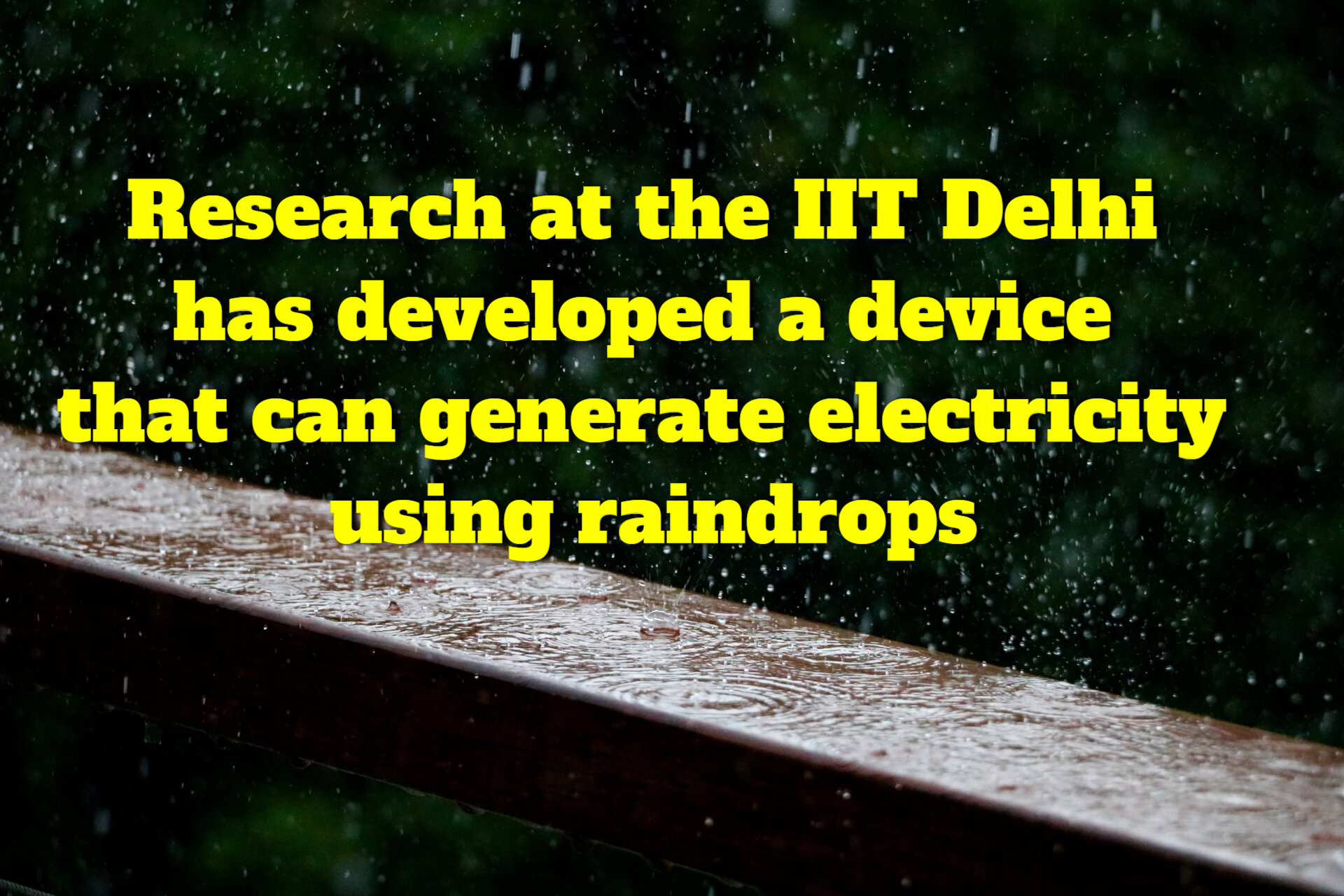The Indian Institute of Technology (IIT) Delhi has created a system that can generate energy from water drops, rainfall, water streams, and even ocean waves. The ‘Liquid-solid Interface Triboelectric Nanogenerator’ technology generates electricity that may be stored in batteries.
Key Highlights
- The ‘Liquid-solid Interface Triboelectric Nanogenerator’ generates electricity that may be stored in batteries for later use.
- The device is made up of specially designed nanocomposite polymers and contact electrodes.
- It can generate a few milliwatt (mW) of power, enough to power small electronic devices such as watches.
The ‘Liquid-solid Interface Triboelectric Nanogenerator’ generates electricity that may be stored in batteries for later use.
Using the ‘triboelectric effect’ and ‘electrostatic induction,’ researchers at the Indian Institute of Technology (IIT) Delhi have created a gadget that can generate energy from water drops, raindrops, water streams, and even ocean waves.
The ‘Liquid-solid Interface Triboelectric Nanogenerator’ generates electricity that may be stored in batteries for later use.
According to a statement from IIT Delhi, the device is made up of specially designed nanocomposite polymers and contact electrodes. It can generate a few milliwatts (mW) of power, enough to power small electronic devices such as watches, digital thermometers, radio frequency transmitters, healthcare sensors, and pedometers. It can create substantially more electricity than traditional methods, such as using the piezoelectric effect.
“The triboelectric effect has long been recognized as a phenomenon in which charges are created when two surfaces come into contact. The best illustration is when we change blankets or jackets and observe glittering lights. It has only recently been thoroughly examined as a viable energy harvesting option, “Professor Neeraj Khare of IIT Delhi’s Department of Physics said as much.
Using the triboelectric effect, Khare and his team at IIT Delhi’s Nanoscale Research Facility (NRF) have researched harvesting electrical energy from wasteful mechanical vibrations. The team has applied for an Indian patent on many aspects of the usage of ferroelectric polymers for mechanical energy harvesting, including the current device.
The NNetRA project has received funding from the Ministry of Science and Technology and the Ministry of Electronics and Information Technology.
The IIT Delhi research team also examined how electricity is generated when a water drop collides with a solid surface and discovered that saline water drops generate more energy.





